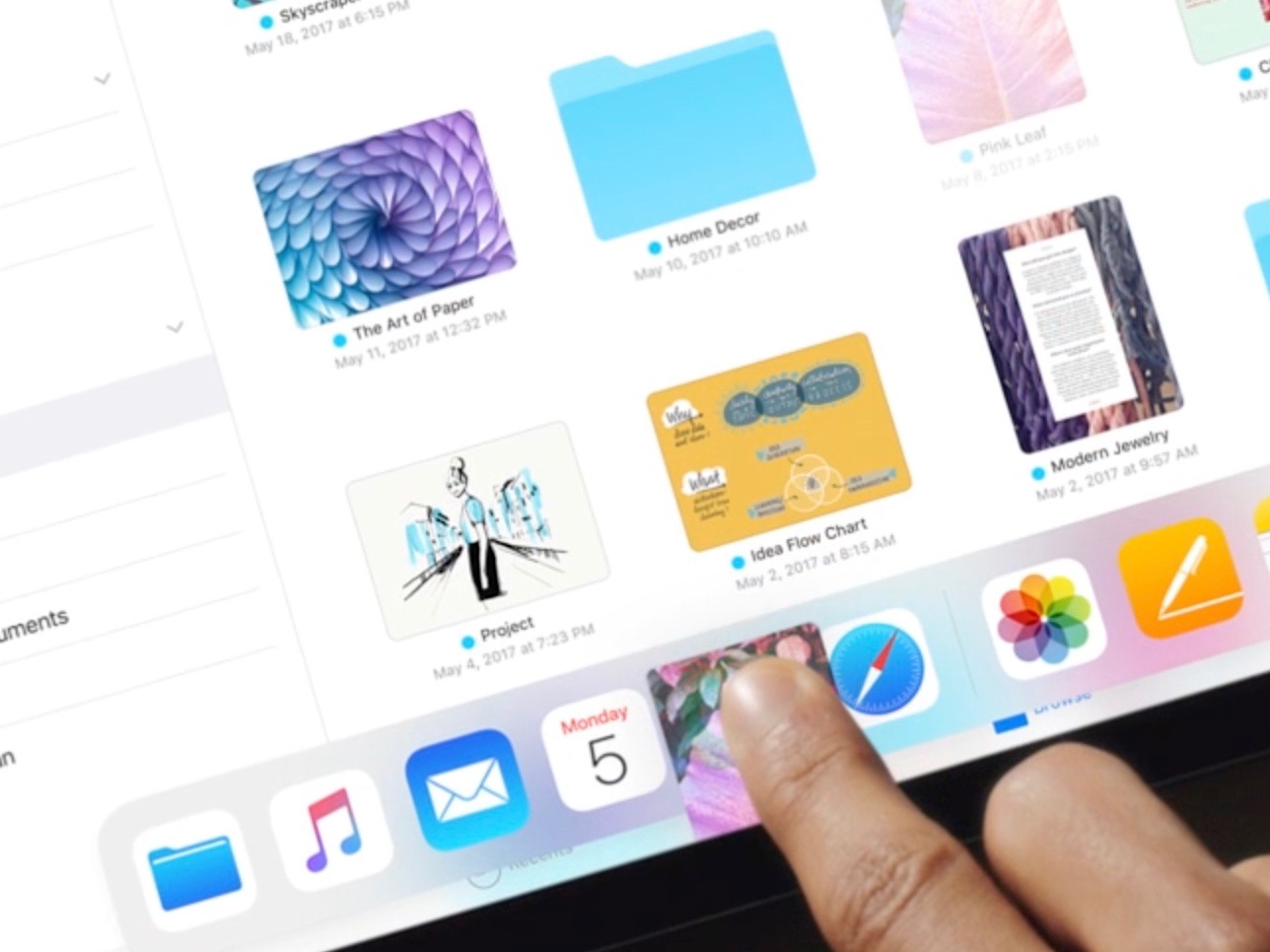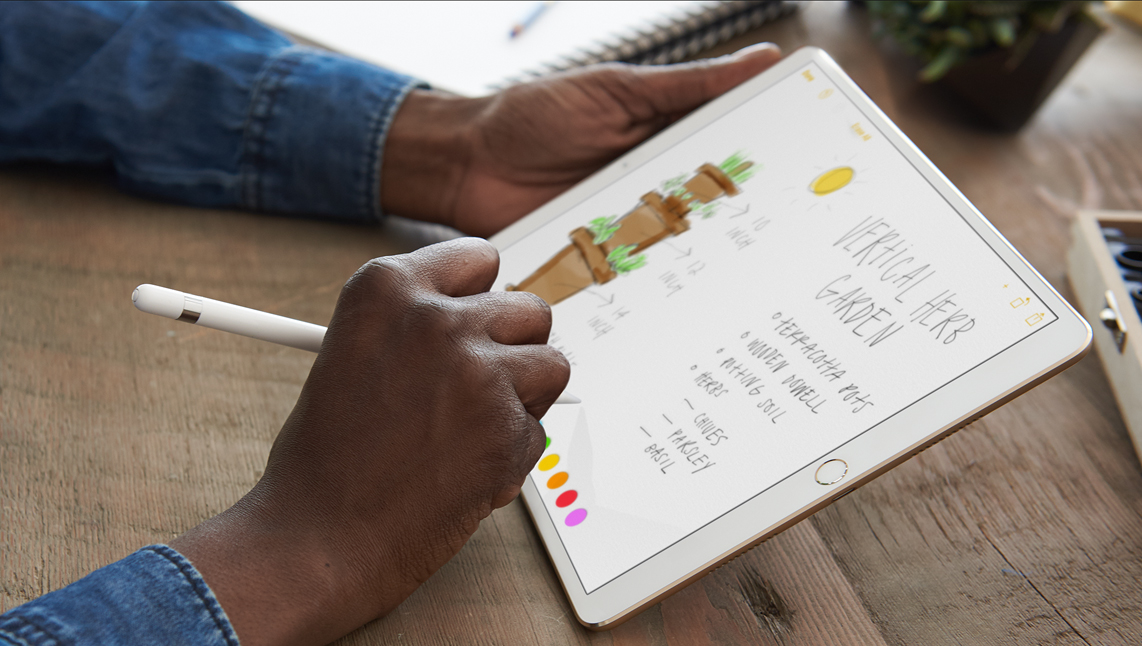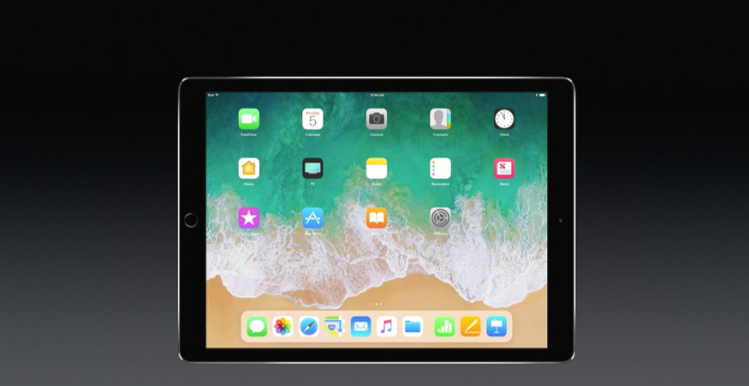Apple is making iPads more appealing as replacements for traditional computers with a set of feature updates announced for the next generation of its mobile operating system.
The company is adding a smorgasbord of iPad-specific features to iOS 11, which is expected out later this year. Users will be able to drag and drop content between different apps, access a file system browser, set up spaces with multiple application windows, and save more apps to the Dock on their device’s home screen.
It’s a move to shore up iPads’ use as productivity devices at a time when they’re facing increased competition from Microsoft’s Surface line and other devices. One of the problems with past versions of iOS is that it was harder for people to get a wide variety of work done on iPads because of missing support for productivity features.
Craig Federighi, the company’s senior vice president of software engineering, unveiled the new features Monday as part of Apple’s Worldwide Developers Conference in San Jose, California.
June 5th: The AI Audit in NYC
Join us next week in NYC to engage with top executive leaders, delving into strategies for auditing AI models to ensure fairness, optimal performance, and ethical compliance across diverse organizations. Secure your attendance for this exclusive invite-only event.

Above: A video still shows the new drag and drop feature for iPads in iOS 11.
Using the drag and drop feature, people will be able to move images, text, and other content between apps on the iPad. That’s made possible in part by a new dock that can hold many more applications than its predecessor in iOS 10. It’s possible to pull up the dock from the bottom of the iPad’s screen in any app and then drag content into a different application.
A new app switcher lets users more easily toggle between different applications, and even save “Spaces,” which are pairs of applications that appear on the screen together. It’s possible to drag and drop content between Spaces using the switcher, or between applications that share the same Space.
The feature also makes it easier for users to have preset window configurations for common tasks, like setting up their calendar and email side by side for quick reference.
One of the other key improvements is a new Files app that lets users browse files stored on their devices, as well as inside cloud storage systems. The app supports iCloud Drive, along with third-party storage services like Box, Dropbox, and Microsoft OneDrive.
Users can drag data from Files into other applications, making it easier to do things like insert an image from Dropbox into a Keynote presentation.
The iPad’s keyboard is also getting an upgrade that allows users to insert numbers and special characters by swiping on the software keys. That’s supposed to make typing faster by reducing the amount of time people have to spend switching between a QWERTY keyboard and a palette of punctuation.

Above: An iPad Pro user draws in the Apple Notes app with an Apple Pencil.
Apple also enhanced the iPad’s support for its Pencil stylus in iOS 11, with new features that make it easier to annotate documents. The company will also allow users to open the Notes app from the tablet’s lock screen by tapping the Pencil on the display. In addition, searchable handwriting will make it easier for people to find notes they previously scrawled into their tablet.
All of these software features will enhance the company’s new line of iPad Pro tablets, which Apple announced earlier in its keynote Monday. Starting next week, users will be able to buy new 10.5- and 12.9-inch tablets that are aimed at professional-grade productivity.
The new features will be available in iOS 11, which is expected to launch this fall. Apple will release a developer beta Monday, and plans to make a public beta available at the end of June.


